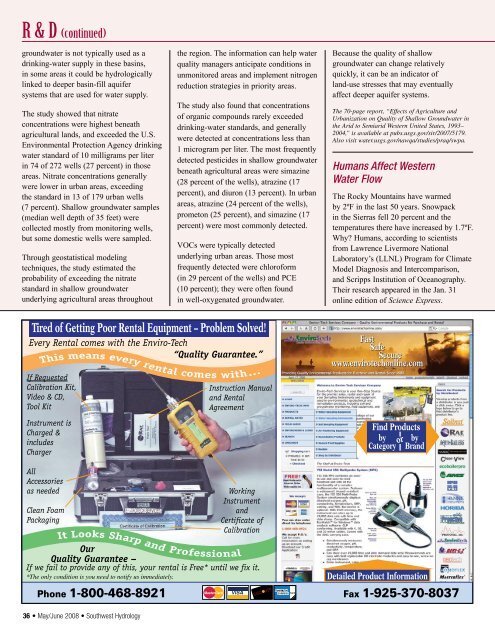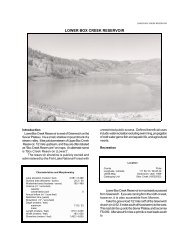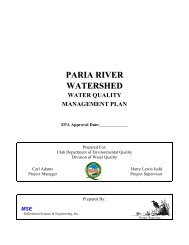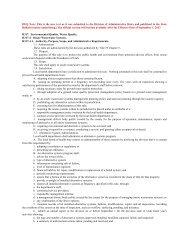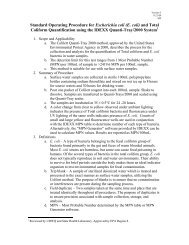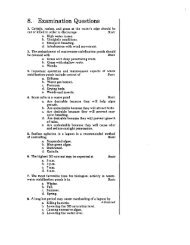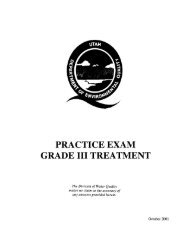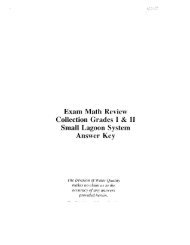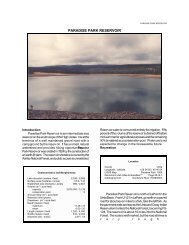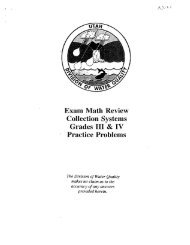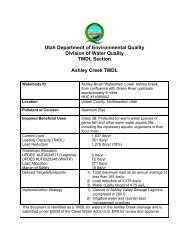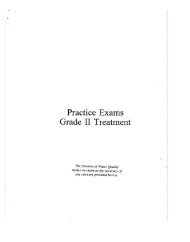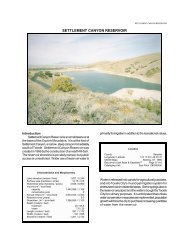Aquifer Recharge, Storage, and Recovery - Southwest Hydrology ...
Aquifer Recharge, Storage, and Recovery - Southwest Hydrology ...
Aquifer Recharge, Storage, and Recovery - Southwest Hydrology ...
- No tags were found...
Create successful ePaper yourself
Turn your PDF publications into a flip-book with our unique Google optimized e-Paper software.
R & D (continued)groundwater is not typically used as adrinking-water supply in these basins,in some areas it could be hydrologicallylinked to deeper basin-fill aquifersystems that are used for water supply.The study showed that nitrateconcentrations were highest beneathagricultural l<strong>and</strong>s, <strong>and</strong> exceeded the U.S.Environmental Protection Agency drinkingwater st<strong>and</strong>ard of 10 milligrams per literin 74 of 272 wells (27 percent) in thoseareas. Nitrate concentrations generallywere lower in urban areas, exceedingthe st<strong>and</strong>ard in 13 of 179 urban wells(7 percent). Shallow groundwater samples(median well depth of 35 feet) werecollected mostly from monitoring wells,but some domestic wells were sampled.Through geostatistical modelingtechniques, the study estimated theprobability of exceeding the nitratest<strong>and</strong>ard in shallow groundwaterunderlying agricultural areas throughoutthe region. The information can help waterquality managers anticipate conditions inunmonitored areas <strong>and</strong> implement nitrogenreduction strategies in priority areas.The study also found that concentrationsof organic compounds rarely exceededdrinking-water st<strong>and</strong>ards, <strong>and</strong> generallywere detected at concentrations less than1 microgram per liter. The most frequentlydetected pesticides in shallow groundwaterbeneath agricultural areas were simazine(28 percent of the wells), atrazine (17percent), <strong>and</strong> diuron (13 percent). In urbanareas, atrazine (24 percent of the wells),prometon (25 percent), <strong>and</strong> simazine (17percent) were most commonly detected.VOCs were typically detectedunderlying urban areas. Those mostfrequently detected were chloroform(in 29 percent of the wells) <strong>and</strong> PCE(10 percent); they were often foundin well-oxygenated groundwater.Because the quality of shallowgroundwater can change relativelyquickly, it can be an indicator ofl<strong>and</strong>-use stresses that may eventuallyaffect deeper aquifer systems.The 70-page report, “Effects of Agriculture <strong>and</strong>Urbanization on Quality of Shallow Groundwater inthe Arid to Semiarid Western United States, 1993–2004,” is available at pubs.usgs.gov/sir/2007/5179.Also visit water.usgs.gov/nawqa/studies/praq/swpa.Humans Affect WesternWater FlowThe Rocky Mountains have warmedby 2ºF in the last 50 years. Snowpackin the Sierras fell 20 percent <strong>and</strong> thetemperatures there have increased by 1.7ºF.Why? Humans, according to scientistsfrom Lawrence Livermore NationalLaboratory’s (LLNL) Program for ClimateModel Diagnosis <strong>and</strong> Intercomparison,<strong>and</strong> Scripps Institution of Oceanography.Their research appeared in the Jan. 31online edition of Science Express.Fast SafeSecurewww.envirotechonline.comFind Productsby byCategory Br<strong>and</strong>orDetailed Product Information36 • May/June 2008 • <strong>Southwest</strong> <strong>Hydrology</strong>


